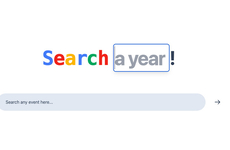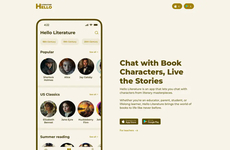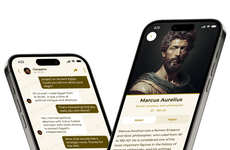
Letters Posted 90 Years Later
Ben Preiss — January 9, 2008 — Pop Culture
References: wwar1.blogspot & news.yahoo
Thousands are returning to William Henry Bonser "Harry" Lamin's blog to see when the next letter from this British WWI soldier will reveal. The letters are being posted exactly 90 years after they were written, people returning to read each new letter, wondering when the bitter news of his death will arrive.
Bill Lamin, a 59-year-old IT teacher found his grandfather's letters when he was a boy, and has now decided to turn them into a blog.
"There are a lot of people saying how keen they are to follow him and are rooting for Harry," said Bill Lamin.
"They get hooked as if it is happening now. People are rooting for a guy who is in the thick of it."
This is a great way to make history come alive for a new generation.
Bill Lamin, a 59-year-old IT teacher found his grandfather's letters when he was a boy, and has now decided to turn them into a blog.
"There are a lot of people saying how keen they are to follow him and are rooting for Harry," said Bill Lamin.
"They get hooked as if it is happening now. People are rooting for a guy who is in the thick of it."
This is a great way to make history come alive for a new generation.
Trend Themes
1. Historical Blogging - The popularity of Harry Lamin's WWI soldier blog showcases the trend of historical blogging, where people are attracted to real-time narratives from the past.
2. Digital Heritage Preservation - Bill Lamin's decision to turn his grandfather's letters into a blog highlights the trend of digital heritage preservation, providing a means to preserve and share historical documents in an accessible and engaging format.
3. Interactive Historical Engagement - The engagement and interest generated by Harry Lamin's blog demonstrate the trend of interactive historical engagement, where readers feel connected to the past and actively participate in the narrative.
Industry Implications
1. Blogging and Content Creation - The success of Harry Lamin's blog presents an opportunity for entrepreneurs and businesses in the blogging and content creation industry to explore and capitalize on historical narratives as a niche for engaging storytelling.
2. Digital Publishing and Archiving - The digitization of historical documents, like the letters in Harry Lamin's blog, opens up opportunities for digital publishing and archiving companies to offer their expertise in preserving and presenting historical content online.
3. Historical Tourism and Education - The interest and connection fostered by interactive historical engagement present opportunities for the tourism and education industries to develop immersive experiences and educational programs centered around personal, real-time historical narratives.
2.2
Score
Popularity
Activity
Freshness























